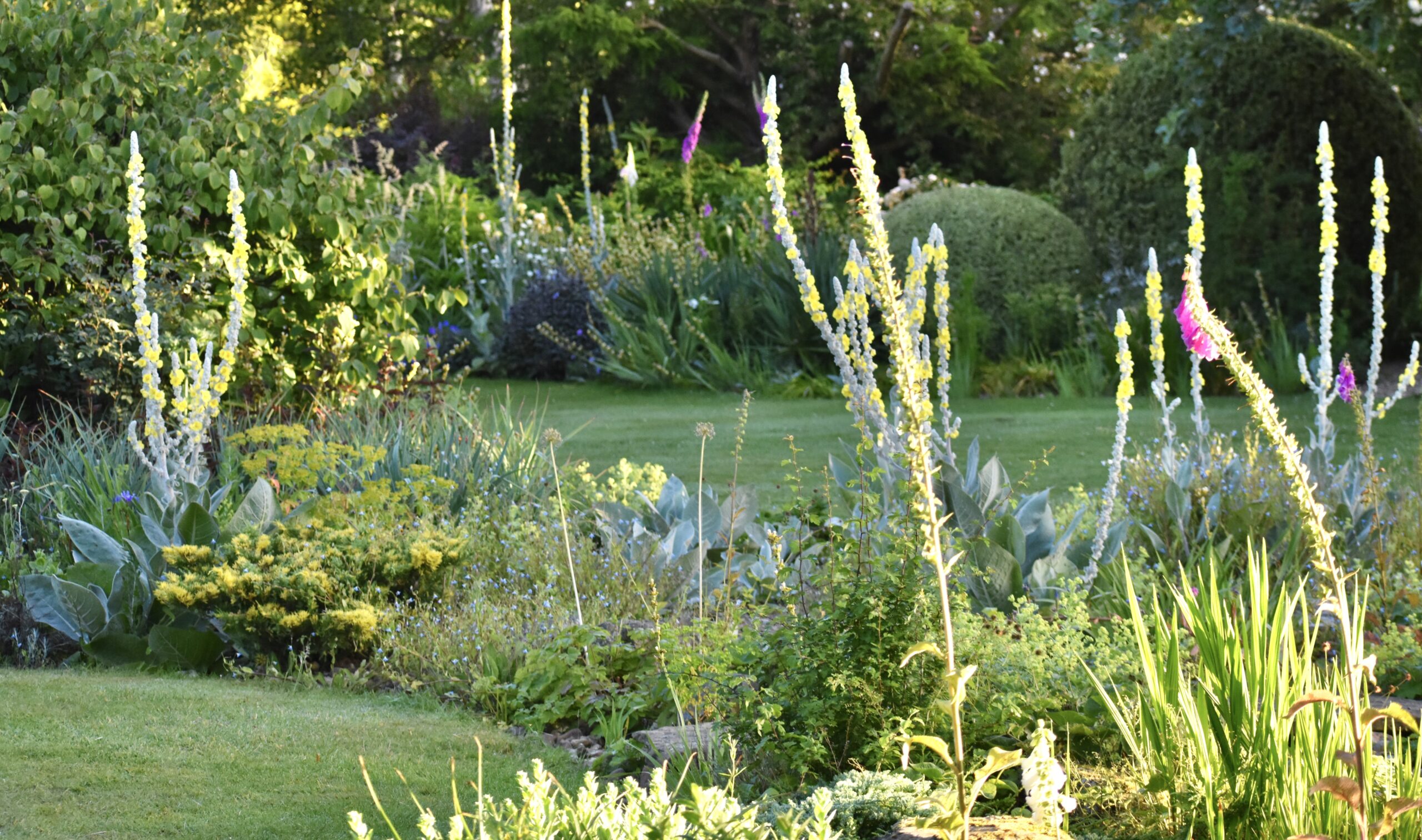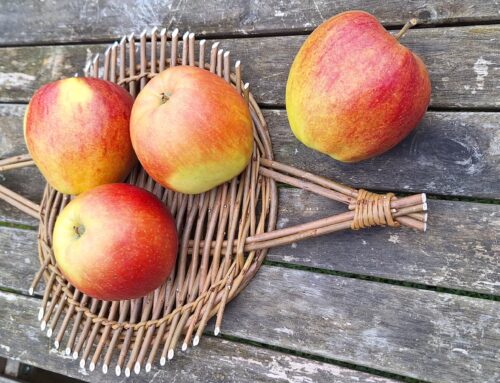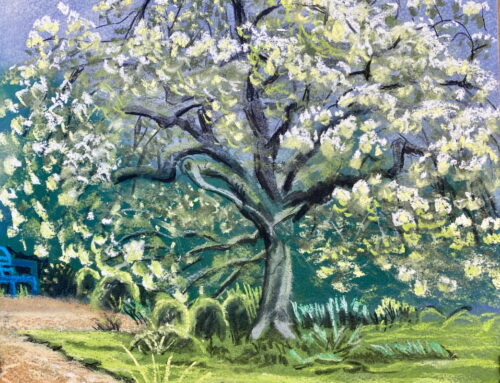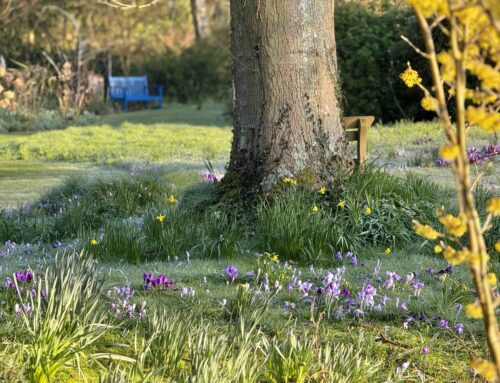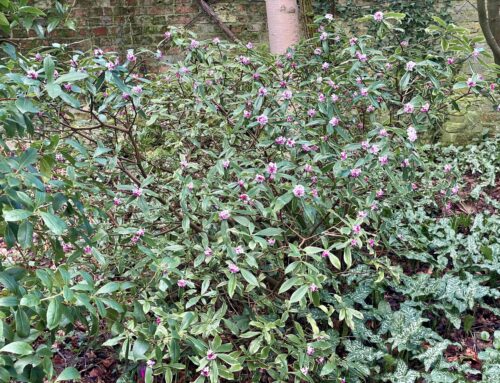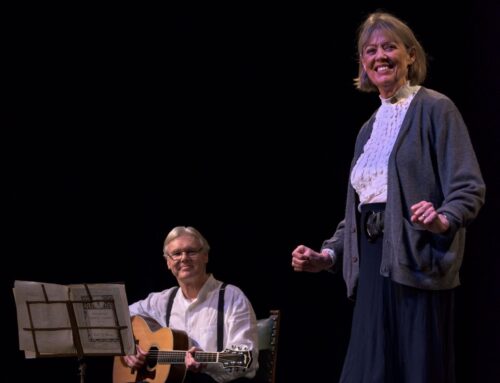Above: A broad variety of perennials and blooming shrubs and trees attract bees year-round at Denmans. Here yellow and silver Verbascum bombyciferum, nectar-rich, flourish in the dry riverbeds.
Denmans has an abundance of plants that are attractive to bees; lavender, salvia, verbascum, echinacea, hellebores, winter-blooming lonicera, and various native wildflowers, to name a very few.
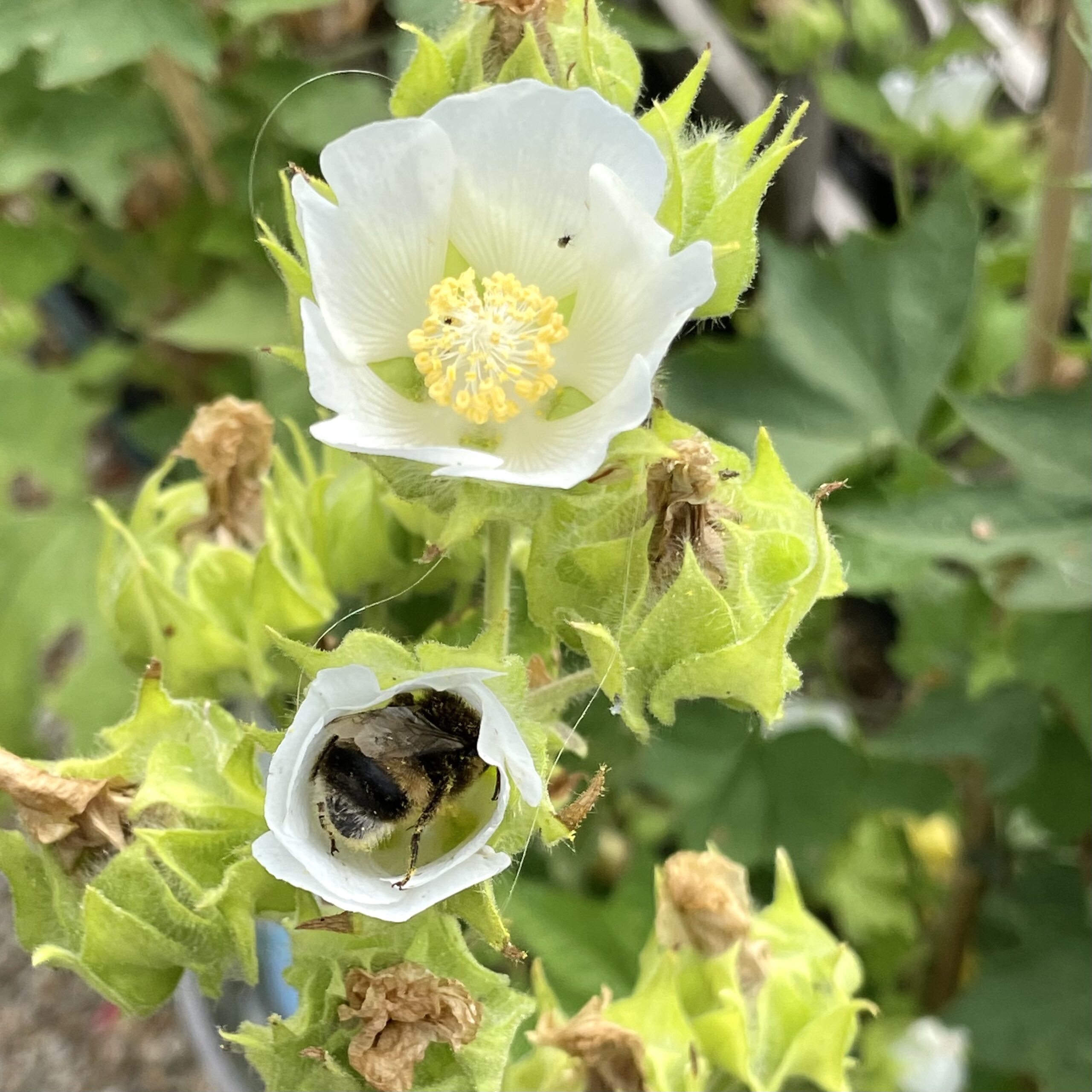
Summer blooming Kitaibela vitifolia is very popular with bumble bees.
Bees are constantly in motion, buzzing from flower to flower in search of pollen. I find it mesmerizing to watch their diligent work, adding a sense of liveliness to the garden. Creating a bee friendly environment is essential for their conservation and the preservation of biodiversity.
To this end, Jonathan Arnold, Denmans’ Head Gardener, invited Mike Edwards, a local expert in the field of bees, to conduct a bee survey of the garden. On a very sunny, hot day in May, Mike arrived armed with bee nets, specimen vials and much enthusiasm, and we embarked on a circuit of the garden.
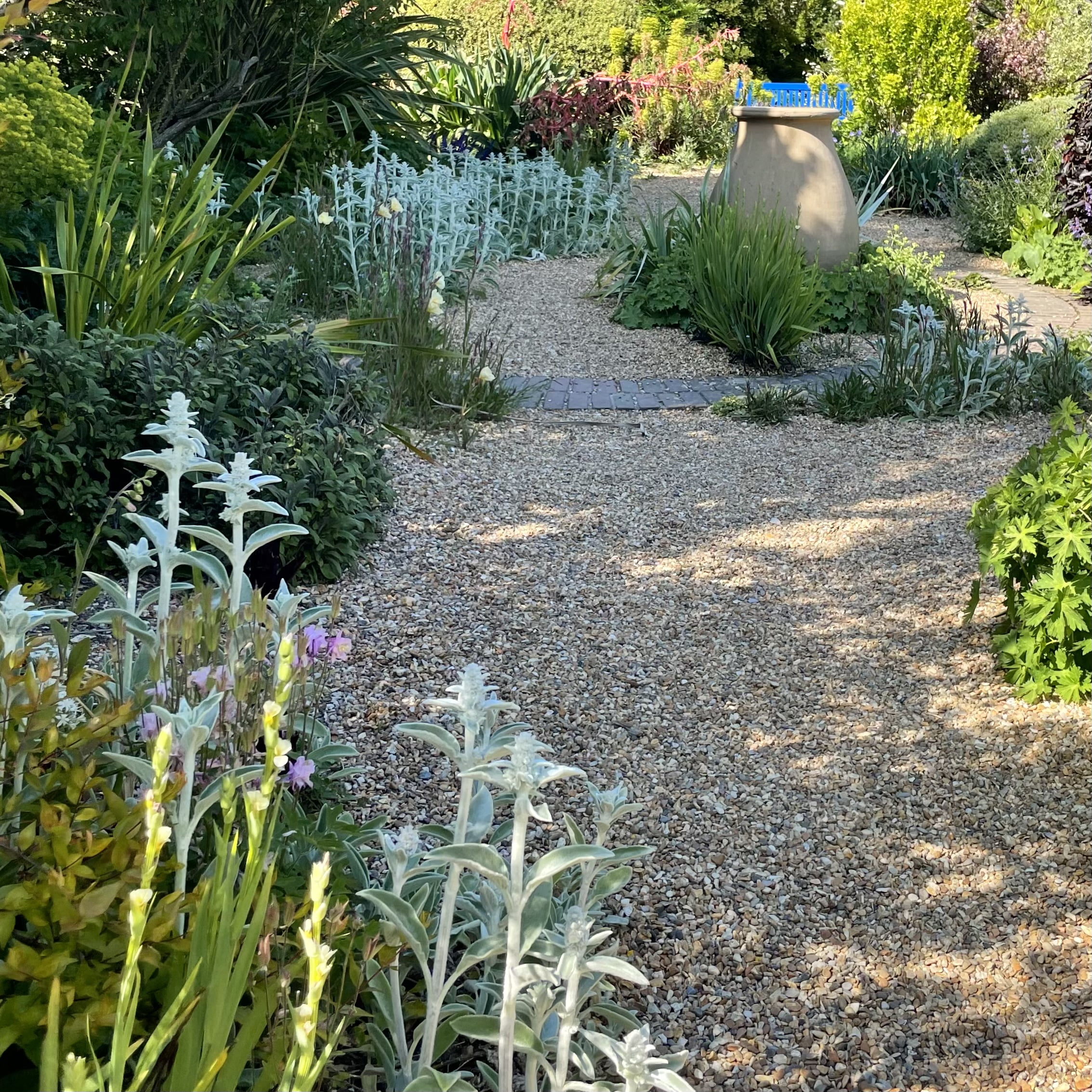
Silver lambs ear (Stachys byzantin) is popular with a variety of bees including the wool carder bee.
Through the Walled Garden we marched. Mike immediately led us to a clump of Stachys byzantina (Lamb’s Ear), a magnet for bees. On any given day, a variety of bees can be seen feasting on its nectar. Mike gleefully informed us that the distinctive wool carder bee, distinguished by its yellow spots, was displaying its unique behaviour. We watched as the females ‘carded’ or collected wool fibres for their nests and the males darted around the flower spikes aggressively to prevent other bees and insects from entering this territory, thus permitting the female species to go undisturbed about their work.
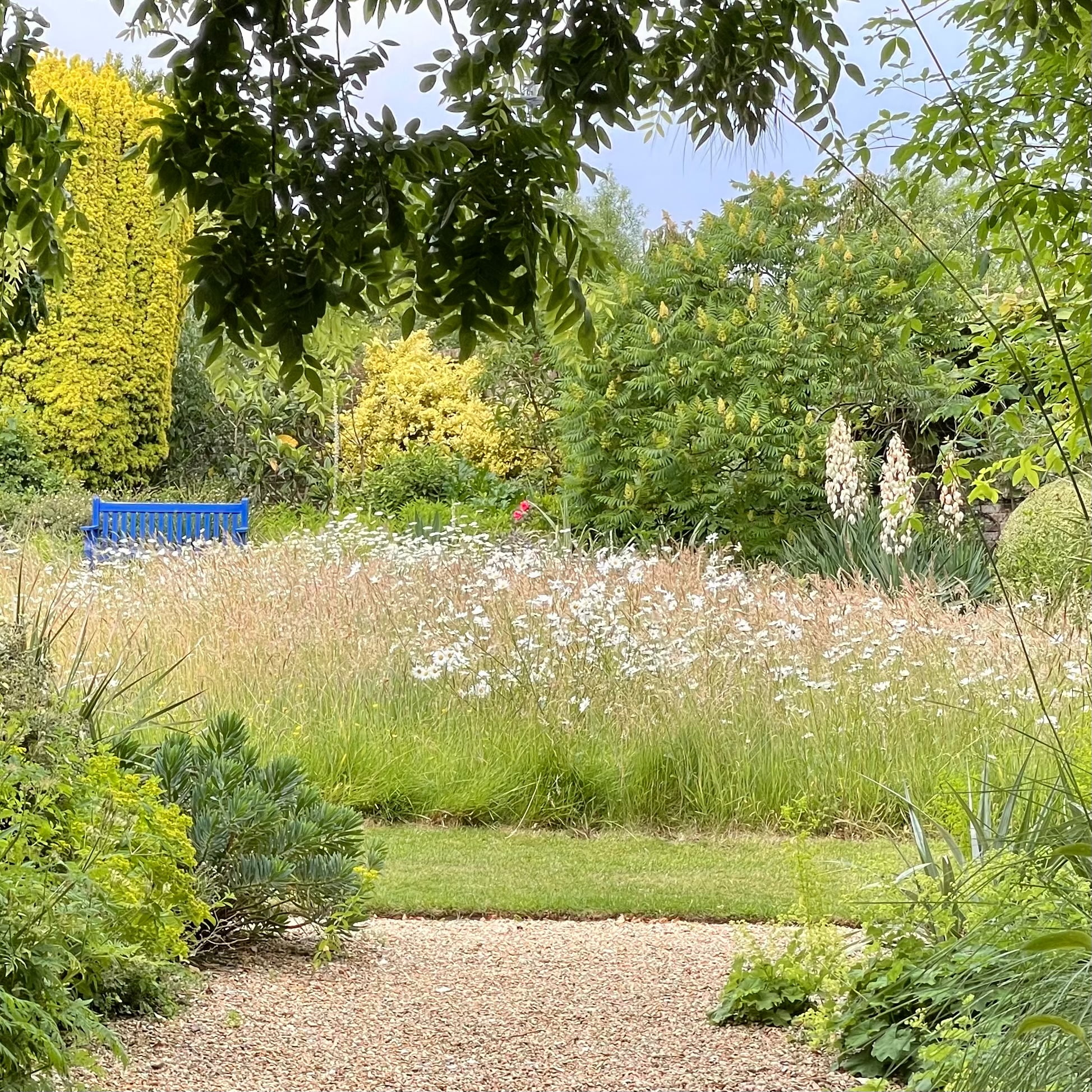
The meadow is fall of all kinds of pollinators beginning in early spring when the bulbs start blooming.
We continued on to the meadow, which is teaming with life. Mike swiped his net, swiftly and steadily across the top of the long grass and inspected the seemingly empty net. He reached for a vial and tipped his catch into it: A leafcutter bee! (Megachile willughbiella).
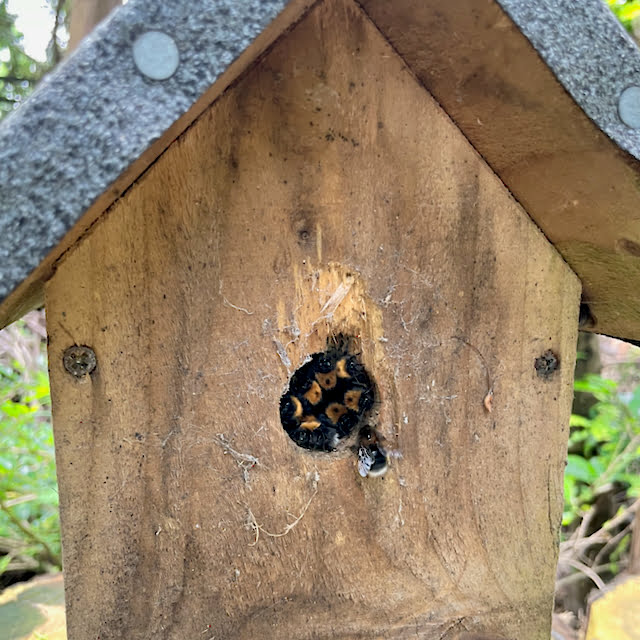
This abandoned bird box has been home to tree bees (Bombus hypnorum) since late spring.
Past the pond and into the Woodland Walk where Mike investigated a disused bird box situated on a stump. Mike identified a colony of Bombus hypnorum (Tree Bumblebees) who were occupying the dwelling. This may seem an unusual habitation for a bumblebee, that typically nests underground yet our Tree Bumblebee favours man-made and pre-existing cavities. Mike informed us that they would spend about a month in their residence building the colony.
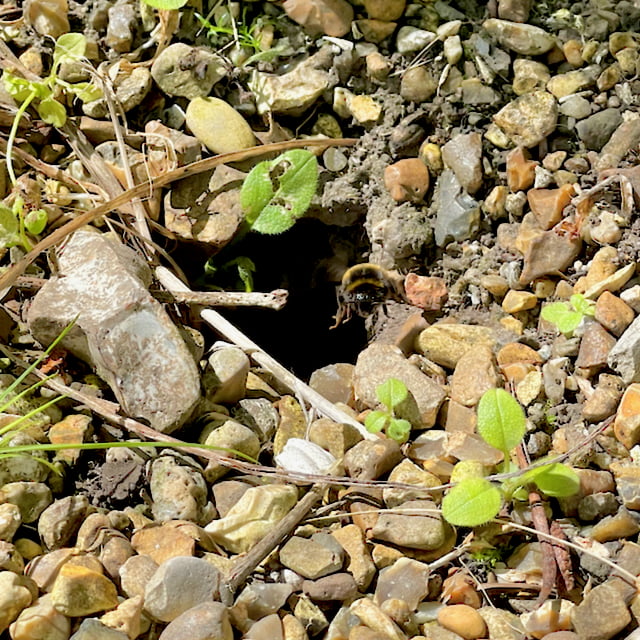
Terrestrial bees (Bombus terrestris) appear to have taken over an old mouse hole for their dwelling.
Past the Cottage we reached The Doves where Bombus terrestris, (the buff-tailed bumblebee), the most numerous bumblebee in Europe and the one we most often recognise, was seen entering and exiting a small hole in the ground – possibly an old mouse nest. These are brilliant foragers and nectar collectors, crucial to pollination.
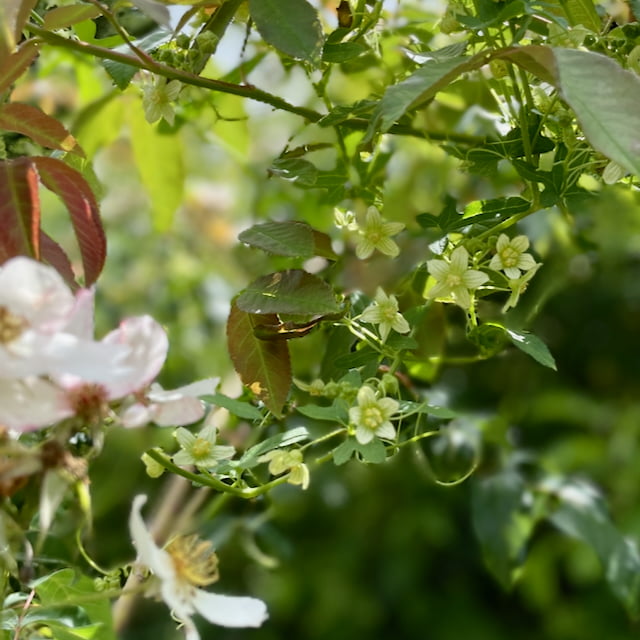
While we still pull many weeds, this Bryony vine(Bryonia dioica), which is growing through an old Kiftsgate rose, will stay as a source of pollen for the Tawny Mining Bee (Andrena fulva).
Moving on, we approached a Briony vine (Bryonia dioica) growing through the enormous Kiftsgate rose opposite Clock House. Mike alerted us to another bee species, Andrena fulva, commonly known as the Tawny Mining bee, performing its magical work of unintentionally transferring pollen from male to female flowers.
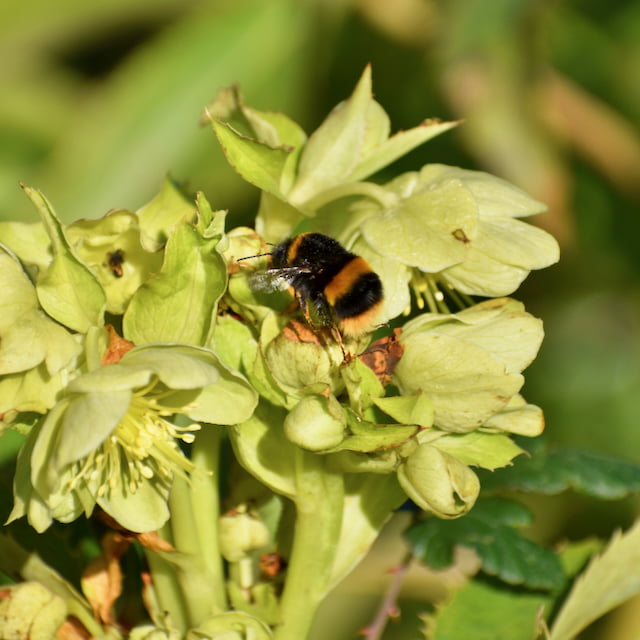
We have any number of winter flowing plants like this hellebore which serve as a source of nectar and pollen in the winter months.
Mike concluded that the variety of flowering plants of differing shapes, colours and bloom times at Denmans attracts and supports a diverse range of bees; and he is excited to return later in the summer to continue his observations. We will keep you up to date on his findings.

